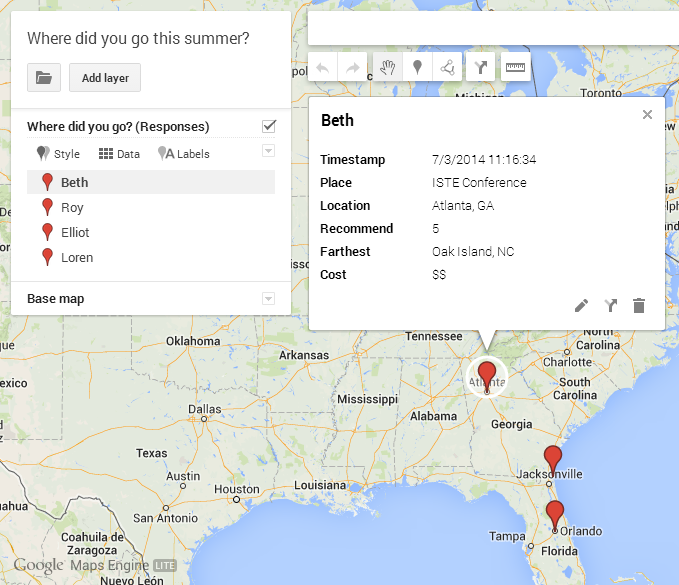So much discussion about
augmented reality this year -- I feel a bit behind. I've had Aurasma on my iPad for some time now but admit I have not explored the possibilities! Enjoyed Tricia Anton's talk about AR including creating Aurasma iMovie trailors and AR flashcards as well as using augmented reality as a starting point for writing.

Another big topic at ISTE this year -
Genius Time, 20% Time, Innovation Day, Play. Enough pop on this to make we want to explore, even though I only see my students for 65 minutes each day.
Jennifer Bond talked about Nurturing Students' Passions with an Innovation Day that was dedicated to students creating anything they wanted to, a "Passion Time." I want to do some exploration on ways to get started with this in
Jonathan Jarc also talked about 20% time from the perspective of 20% Inquiry Time, based on a Google idea. I did not realize that Google Maps and gmail came out of 20% time -- very cool! He challenges students to investigate, learn something new and produce something. They keep an activity log and turn that in with their digital product - an app, a game, a video.
middle school classrooms - departmentalized, short meeting time.
Liked
Trisha Callella's challenge to close the generational technology gap by flipping the learning. Children teach adults through instructional video. This topic came up many times over the conference. Alan November pointed out that teachers' perspectives often fail to account for the new learners' feelings and process. We've known it for so long! Children can more easily explain to other children something that they have learned. I know I learn material/concepts best when I am asked to teach it to others -- our students do too! Great idea to have students create these instructional videos, both for adults and for other students.
Billy Krakower was the first person at the conference that I heard talking about Mystery Skype calls and I can't wait to try it. What a great way to engage student's curiosity, questioning and problem solving skills!
The more I heard about coding and how it increases students' ability to persist, to overcome failures and to learn from mistakes (
Jack Lawicki) the more sold I was on teaching my students to code -- even if I myself am not a coder. I'll learn with them! Another tip from ISTE presenters - learn with them, it's okay to be uncomfortable, put ourselves in the place of learner just like our students.
Loved
Tamara Letter's sharing of how she pledged to do 40 random acts of kindness and later took this into her classroom with student bloggers documenting the RAKs. She has inspired me to be a "Raktivist"!




